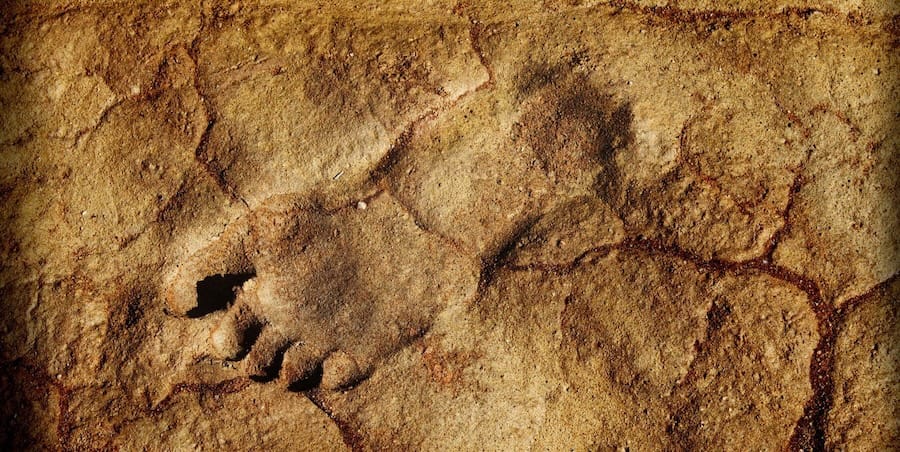Archaeologists Found 23,000-Year-Old Footprints That Rewrite the Story of Humans in America
New evidence steadily accumulates that humans were in America 10,000 – 20,000-years earlier than previously thought

“As discussed below, new evidence steadily accumulates that humans were in America 10,000 – 20,000-years earlier than previously thought.
NOTE: this article was originally published to Popular Mechanics Apple News channel on May 15, 2024. It was written by Tim Newcomb.
New Mexico’s ancient sands reveal the oldest-known traces of early inhabitants.

- Studying preserved footprints in New Mexico continues to provide insight into the first human movements in North America.
- A research team believes the footprints are more than 23,000 years old, confirming an earlier study that dates the prints to 10,000 years older than previously believed.
- Tracking the footsteps provides modern scientists a view into ancient life.
White Sands National Park has some of the most archaeologically rich sand in North America, and it is within this New Mexicolandscape that the oldest footprints ever found on the continent were discovered. Recent research now dates those footprints to roughly 23,000 years old—about 10,000 years before it was previously believed humans existed in North America.
“The site in New Mexico has rewritten history books as we’ve discovered wonderful examples of human activity, the way that humans interacted with one another, with the landscape, and with the animal life there,” Sally Reynolds, principal academic in paleoecology at Bournemouth University, said in a statement. “These footprints provide a valuable window into the lives our ancestors lived and how much they were like us.
Previously believed to be about 13,000 years old, a study in 2021 by U.S. Geological Survey researchers instead dated the footprints to about 23,000 years ago using radiocarbon datingmethods. The team wanted to confirm those findings, though, and published another study in the journal Science in late 2023 that confirmed the newly “calibrated” aging of the footprints with the dating of fossilized pine pollen.
With pollen and common ditch grass seed found both in the footprints and within the same layer of hardened mud in which the footprints were found, the team was able to confirm the new 23,000-year-old date, showing that humans were on the continent during the Last Glacial Maximum. The team also used optical stimulated luminescence to look at background radiation in quartz. The more energy in the quartz, the older the find. This helped corroborate the date.
Matthew Bennett, a Bournemouth University professor and co-author of the study, said in a statement that the team was pleased that after the initial study was investigated further, they were able to provide new results that “underline the accuracy of our original study and provide a fascinating update to the movements and lifestyles of our ancestors.”
And those movements were aplenty. As chronicled in a Smithsonianarticle with Bennett, the footprints of the White Sands area show children playing near puddles, hunters tracking a giant sloth, and a young woman carrying a child and slipping in the mud—possibly from being chased by a predator.
“There were hungry predators around, including dire wolves and saber-toothed cats,” Bennett said, according to Smithsonian. “We can see where she slipped in the mud at certain points. … We can also see the child’s footprints where she set it down, presumably because she was tired and needed a rest.”
Some footprints can be seen without technology, while others required ground-penetrating radar to find.
“The footprints left at White Sands give a picture of what was taking place, teenagers interacting with younger children and adults,’ Bennett said in a statement. “We can think of our ancestors as quite functional, hunting, and surviving, but what we see here is also activity of play, and of different ages coming together. A true insight into these early people.”
Bennett said that while the footprints found in the area do provide small glimpses to what life was like 23,000 years ago, the team hopes to find even more footprints to tell a larger story of life in North America.
“The lasting legacy of White Sands,” he said, “is to point the way to a new archive of evidence.”
-
Tim Newcomb is a journalist based in the Pacific Northwest. He covers stadiums, sneakers, gear, infrastructure, and more for a variety of publications, including Popular Mechanics. His favorite interviews have included sit-downs with Roger Federer in Switzerland, Kobe Bryant in Los Angeles, and Tinker Hatfield in Portland.
